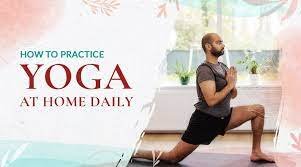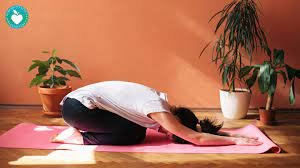Yoga, a centuries-old practice originating from ancient India, has gained immense popularity worldwide for its holistic approach to physical and mental well-being. If you’re a beginner contemplating stepping onto the yoga mat, you’re embarking on a journey that can transform your life. In this comprehensive guide, we’ll explore the ins and outs of yoga for beginners, providing valuable insights, tips, and practical advice to kickstart your yoga journey.

I. Introduction
A. Definition of Yoga
Yoga is more than a physical exercise; it’s a holistic discipline that unites mind, body, and spirit. The word “yoga” itself means union, and the practice is designed to achieve harmony and balance in various aspects of life.
B. Importance of Yoga for Beginners
For beginners, yoga offers a gentle entry into a healthier lifestyle, fostering physical fitness, mental clarity, and emotional well-being. Its adaptable nature makes it accessible to people of all ages and fitness levels.
II. Health Benefits of Yoga
A. Physical Benefits
1. Improved Flexibility
One of the primary physical benefits of yoga is enhanced flexibility. Regular practice gradually loosens tight muscles and increases the range of motion, promoting better overall mobility.
2. Increased Strength
Yoga poses engage various muscle groups, contributing to improved strength and endurance. Unlike traditional strength training, yoga builds strength while emphasizing balance and flexibility.
B. Mental Benefits
1. Stress Reduction
The mindful and meditative aspects of yoga help alleviate stress by promoting relaxation and reducing the production of stress hormones.
2. Enhanced Mental Clarity
Yoga encourages mindfulness, enhancing mental focus and clarity. This mental discipline gained on the mat can positively impact daily life.

III. Getting Started with Yoga
A. Choosing the Right Yoga Style
With numerous yoga styles available, beginners should explore and find a style that resonates with their preferences and goals. Options include Hatha, Vinyasa, and Yin yoga, each offering a unique experience.
B. Essential Yoga Equipment
Contrary to popular belief, you don’t need expensive equipment to start practicing yoga. A comfortable mat and breathable clothing are sufficient for most beginners.
IV. Basic Yoga Poses for Beginners
A. Mountain Pose
A foundational standing pose that focuses on grounding and alignment, the Mountain Pose is an excellent starting point for beginners.
B. Downward-Facing Dog
This pose combines strength and flexibility, targeting the entire body while promoting a sense of calm and relaxation.
C. Warrior I and II
Warrior poses build strength in the legs and core, enhancing overall stability and balance.
D. Child’s Pose
A restorative pose, Child’s Pose allows beginners to rest and relax while promoting flexibility in the spine and hips.
V. Breathing Techniques in Yoga
A. Importance of Breath Control
Yoga places a significant emphasis on breath control. Conscious breathing enhances the mind-body connection, promoting relaxation and focus during practice.
B. Simple Breathing Exercises
Pranayama, or breath control exercises, help beginners develop awareness of their breath and enhance their overall yoga experience.
VI. Overcoming Challenges
A. Dealing with Initial Discomfort
As with any new endeavor, beginners may experience initial discomfort. Patience and gradual progression are key to overcoming this phase.
B. Staying Consistent
Consistency is crucial for progress in yoga. Establishing a regular practice routine, even for a few minutes each day, yields more significant benefits than sporadic, intense sessions.
VII. Common Mistakes to Avoid
A. Pushing Too Hard
Overexertion can lead to injury. Beginners should focus on proper form and gradual progression rather than pushing their limits.
B. Neglecting Rest Days
Rest days are essential for muscle recovery. Neglecting them may lead to burnout and hinder long-term progress.
VIII. Progression in Yoga Practice
A. Gradual Intensity Increase
As beginners become more comfortable with basic poses, they can gradually intensify their practice by exploring more challenging postures.
B. Exploring Advanced Poses
Advancing in yoga doesn’t mean abandoning the basics. Exploring advanced poses should be approached with caution and proper preparation.
IX. Yoga and Meditation
A. Complementing Practices
Meditation and yoga go hand in hand. Combining these practices enhances the overall benefits, fostering a deeper sense of inner peace.
B. Benefits of Combining Yoga and Meditation
The synergy between yoga and meditation amplifies the positive effects on both the body and mind, creating a harmonious wellness routine.
X. Resources for Beginners
A. Online Tutorials
Various online platforms offer beginner-friendly yoga tutorials, allowing individuals to learn and practice from the comfort of their homes.
B. Yoga Classes
Attending local yoga classes provides a supportive community and guidance from experienced instructors, enhancing the learning experience.
XI. Incorporating Yoga into Daily Routine
A. Morning Yoga Routine
Starting the day with a brief yoga routine can boost energy levels, improve focus, and set a positive tone for the day.
B. Evening Relaxation Sequence
A gentle evening sequence can help unwind and relax, promoting better sleep and overall well-being.
XII. Personal Success Stories
A. Testimonials from Beginners
Real-life success stories from beginners can serve as inspiration, showcasing the transformative power of yoga.
B. Inspirational Journeys
Highlighting individuals who started their yoga journey as beginners and achieved remarkable physical and mental transformations.
XIII. Common Myths About Yoga
A. Debunking Misconceptions
Addressing common myths and misconceptions surrounding yoga, providing clarity for beginners.
B. Clarifying Popular Beliefs
Separating fact from fiction to ensure beginners approach yoga with accurate information.
XIV. Yoga for Special Populations
A. Seniors
Adapting yoga for seniors, emphasizing gentle movements and modifications for varying fitness levels.
B. Children
Introducing yoga to children, emphasizing the benefits of mindfulness and movement from an early age.
XV. Conclusion
A. Recap of Key Points
Summarizing the essential aspects of starting a yoga journey for beginners.
B. Encouragement for Beginners
Encouraging readers to embrace the journey, understanding that progress in yoga is a personal and continuous evolution.
FAQs (Frequently Asked Questions)
- Is yoga suitable for all age groups? Absolutely! Yoga is adaptable and can be practiced by people of all ages, from children to seniors.
- Do I need prior fitness experience to start yoga? Not at all. Yoga is beginner-friendly and can be tailored to individual fitness levels.
- How often should I practice yoga as a beginner? Starting with a few sessions per week and gradually increasing frequency is a good approach for beginners



